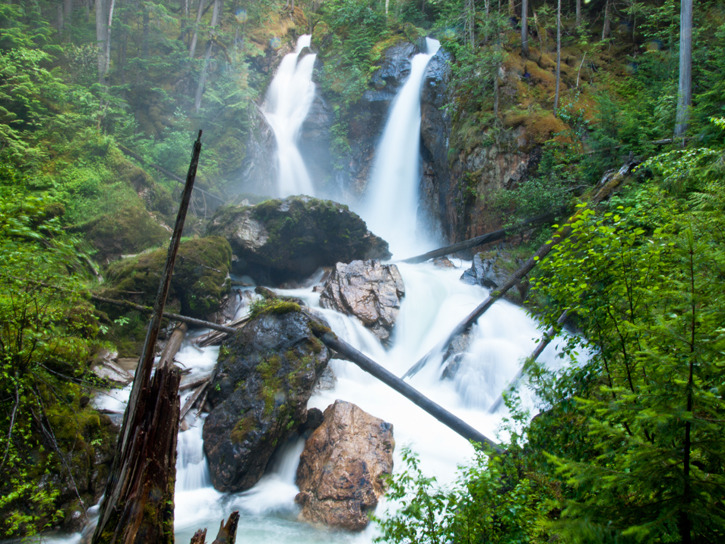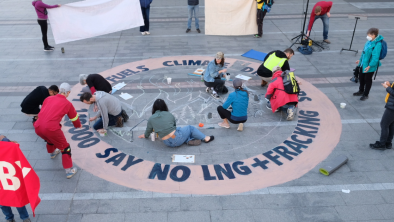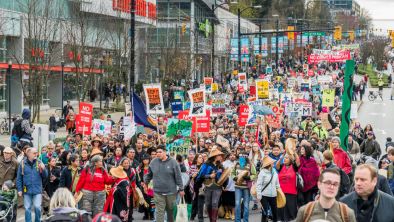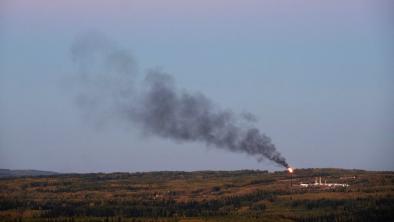Feature: Which Revelstoke creeks are slated for diversion into IPP pipes?
Revelstoke Times Review

Revelstoke residents are keenly interested in the fate of their local rivers and creeks, yet making projections about so-called ‘IPP’ river power projects is tricky. Our feature story explores which creeks and rivers will likely be diverted and when. We also explore recently-uncovered transgressions at a local facility that dried out a river and killed resident trout.
What’s happening with independent power projects on rivers around Revelstoke? How many local rivers and creeks are likely to be diverted into pipes in the next five, ten or more years?
Applications have been made to build IPPs on Begbie Creek, McKay Creek, Cranberry Creek and Moses Creek, but are these projects likely to proceed? After all, many of the projects that were staked out over the past decade are not likely to be built.
I set out find out what projects will likely proceed in the immediate Revelstoke area. Although the answers aren’t conclusive (for several reasons) I think this story paints a fair picture of what we’re likely to see, including a piped-up river that runs past a popular hiking trail, and evidence that an existing IPP project in the region likely destroyed fish due to bad design and poor management – and, even though they were caught by the authorities, they didn’t face serious sanctions. This despite the fact that choking off the river to generate more electricity meant more profits for the corporation that owns that IPP.
Mountain Mike Watson
Meet Mountain Mike Watson. He hosts a weekly radio show on StokeFM called Mountains, Lakes and Streams, where he focuses on local and regional energy issues. When he strolls into my office in early March, the 30-year-old railroader brings a black binder with detailed research on all the local IPP projects. Watson is the chairperson of a North Columbia Environmental Society committee exploring IPPS.
His educational background is in planning and he got involved with the IPP issue when living near Bute Inlet, B.C. He heard about the industrial-scale projects proposed there and got involved; it was a way for him to exercise his planning background. “I’m an academic by heart,” he says.

PHOTO: Mike Watson
In the Revelstoke area, there are about 60 different IPPs proposed but many will not go forward. The staking system established for these creeks meant many private interests grabbed any creek available during the early to mid 2000s. Lots of them are simply too remote, too difficult to engineer or face too many environmental hurdles.
So, in Watson’s opinion, which local projects are likely to proceed?
McKay Creek (also known as Eight Mile Creek):
If you hike the Mt. Cartier Trail you cross over this creek. It crosses Airport Way through a culvert just south of the Mt. Cartier trailhead.
Watson says construction is likely to begin in 2013. He’s taken a walk of the area with a representative of the proponent. The project is currently in the permitting stage.
Moses Creek:
Located up Westside Road near the Revelstoke Dam, this project is also further advanced on the planning process, and could possibly start in the next couple of years.
Begbie Creek:
Located at the foot of Mount Begbie, this project has drawn the most concern and comment from local residents, largely because of its connection to recreational amenities in the area. However, this project isn’t as far along as others. It doesn’t seem it will move forward for five or 10 years, if at all.
Cranberry Creek:
This project on South Cranberry Creek near Shelter Bay was completed about four years ago. Owners Advanced Energy Systems are contemplating an extension of the project up Cranberry Creek. Watson is far more concerned with the extension; the existing project is in already heavily logged terrain, but he describes the extension into “pristine wilderness.”
These four projects look to be the most likely to go ahead. The first two seem fairly certain. I also spoke with a local BC Hydro representative, but she told me local Hydro plans wouldn’t be known until Hydro completes its Integrated Resource Plan, which will be submitted to the B.C. Government in late 2012.
The fate of many of the other projects (as we’ll see later) may be on hold forever due to policy changes in Victoria.
Large scale protests for much bigger projects played a key role in stopping (or stalling indefinitely) the larger-name ones, such as Glacier-Howser near Kaslo, amongst other projects outside of the region.
“A lot of these major projects have gone by the wayside because of those protests, and I think that’s why it’s died down,” says Watson. I once attended a public hearing at a Kaslo high school for Glacier-Howser. Kootenay residents are always strident with their opinions, but that hearing was remarkable with more than 1,000 people shouting their opposition for hours through the evening hearing.
But the smaller micro-projects are still advancing: “There’s not a surge in major projects being proposed – it’s the smaller ones that are being proposed, and those kind of go under the radar,” Watson says.
For him, that’s the concern locally, in a valley already seriously impacted by the Columbia River dams.
“I’m concerned with having about seven proposals from here to the ferry,” he said. “It seems like every second watershed has a proposal on there. And I don’t think it’s in our best interest to industrialize these watersheds for such little power.”
Watson and the NCES IPP committee continue on with their education and research work. During our interview, Watson was careful to take back statements that tread too far into political waters, noting it’s not within the NCES’s mandate to be political.
“For me, it’s just the environmental damage [to] these small creeks,” he said.
Oh, and I can’t help asking: why ‘Mountain’ Mike? The conductor looked like another railroader with that nickname, and it just stuck.
Does Premier Clark’s Liquid Natural Gas strategy sinks IPPs?
It was a bullet point in an early February 2012 announcement from B.C. premier Christy Clark about plans for new Natural Gas Strategy. The plan is to ramp up natural gas extraction in the north and expand and establish industrial-scale facilities on the north coast that compress the gas into a liquid so it can be put into ships bound for Asia. These plants suck electricity big-time, and they need firm power (read Site C dam), not seasonal IPP power.
One of the key points of the plan reads: “A redefinition of the Province’s self-sufficiency policy to ensure B.C. is well-positioned to power expansion.”
So, what does that last point mean? Critics of IPPs as they existed under the BC Liberal government were critical of the Clean Energy Act and the 2007 BC Energy Plan, which placed strict electrical energy self-sufficiency rules and goals on B.C. and BC Hydro.
The act required BC Hydro to generate enough electricity to be self-sufficient during drought years. The act also restricted BC Hydro’s ability to create more electrical generating capacity themselves, forcing them to look to the private sector to generate this electricity. River power projects were one of them, and these private interests commanded much higher prices for their electricity – which would eventually trickle down to consumers through higher BC Hydro bills.
The B.C. Utilities Commission in 2009 issued a report criticizing BC Hydro’s plans to ink deals with private power companies. The commission was rebuked in April of 2010 when then premier Gordon Campbell unveiled the new Clean Energy Act, which stripped the BCUC of key regulatory functions.
All that political wrangling in Victoria about regulations didn’t capture the public’s attention, but a report by B.C. Auditor General John Doyle released in November of 2011 did. Doyle noted that BC Hydro’s use of “deferral accounts” painted a much rosier picture of Hydro’s bottom line – if one didn’t take into account debts of $2.2 billion piled up in these accounts. The number was expected to grow to $5 billion by 2017.
The practice can “mask the true cost of doing business, creating the appearance of profitability where none actually exists, and place undue burdens on future taxpayers,” Doyle warned.
Despite cost-cutting efforts at BC Hydro in 2011 that lopped off 700 jobs, BC Hydro rates were jacked up again on April 1 of this year. The average home will pay an extra $5 per month. IPP projects were seen as one of the contributors to these overruns, leading to mainstream criticism of the rules that require Hydro to pay out guaranteed IPP rates over long-term contracts that are much higher than from conventional firm sources of power, like dams. While rural residents of areas highly-affected by river IPP projects (like here in Revelstoke) may be primarily concerned with the effects of these IPPS on their natural environment, it was the voice of more numerous city-dwellers complaining about their electricity bills that turned the tide.
The February natural gas announcement from the premier is set to change the definition of self-sufficiency. Pending the final details, Hydro will likely not be required to buy as much IPP energy in the future, if at all.
‘It takes away the rocket fuel’
That’s how Wilderness Committee policy director Gwen Barlee described the announcement by premier Clark to dial back ‘self-sufficiency’ requirements. The self-sufficiency clause was the “rocket fuel” that drove the rush to stake and develop rivers across the province over the past decade.
But now that these guaranteed contracts look to be drying up, there’s doubt that projects that haven’t already advanced far into the regulatory process will go much further.
“Putting wild rivers in pipes for energy that came at the wrong time of the year, and that B.C. doesn’t need, has been an abysmal failure,” Barlee said. “It has put an enormous financial burden on BC Hydro, which is our best tool against climate change, and has ruined dozens of wild rivers in B.C.”
According to her figures, IPP projects produced 16 per cent of B.C.’s total domestic energy requirements in 2010, but racked up 49 per cent of overall domestic energy costs.
“What Premier Clark needs to do now is ensure that proposed river projects such as the Kokish, Upper Lillooet, Upper Toba and Harrison, which have energy purchase agreements with BC Hydro but aren’t yet built, do not proceed,” said Barlee. “Not only would it be environmentally damaging if these unnecessary projects proceeded but it would throw away billions of dollars of ratepayers’ money.”
In a telephone interview, Barlee also points to environmental transgressions at existing facilities that led to the death of fish. A freedom of information request into the Ashlu Project near Squamish showed repeated problems with fish stranding and fish kills. Notes from inspectors show repeated episodes of fish being stranded or killed.
“Private power projects weren’t supposed to be built in fish habitat and they weren’t supposed to impact fish,” said Barlee. “Now we are seeing serious problems in regards to fish stranding, kills and habitat damage. This is unacceptable to British Columbians. None of these projects should be located in fish habitat and if they aren’t operating within the law they should be shut down.”
Akolkolex IPP transgressions

PHOTO: The Akolkolex River below the IPP intake weir was starved of water in 2005. Courtesy Mike Watson
Another FOI document published on the Government of B.C.’s Open Info site points to transgressions at a local IPP project, albeit in 2005 and 2006.
The Akolkolex IPP south of Revelstoke was the subject of investigation for drying up the river and killing trout downstream. The FOI request shows a series of communications between local environment officials as they investigated the dry river bed.
“There is a dried out stream below Akolkolex Power Plant in Revelstoke . . . the last time he saw it with water was three days ago,” wrote one official. “This is fish sensitive habitat with at least three different types of trout.”
Another noted: “These two breaches of their license have not only directly profited the company (every cubic-metre/sec of water not diverted generates additional watts of electricity which the company sells), but has also impacted the downstream environment . . .”
Another recommended charges against the owners.
The project was originally owned by Canadian Hydro Developers, but was purchased by TransAlta in 2009, after the incidents.
The report also noted faulty mechanical equipment that prevented water from flowing properly into the river, instead diverting too much into electricity-generating pipes.
In the FOI document, an engineer for Canadian Hydro Developers said the issue was due to a design flaw. “The incident in question was a result of debris caught in the gate which could not be safely removed until river flows decreased and we stopped spilling,” he writes.
A 2006 letter from B.C. government Assistant Regional Water Manager Dwain Boyer noted the design of the facility was flawed. “It was also the staff’s opinion that there was no obvious way that the structure could pass the required minimum flow under normal conditions.”
Local conservation officer Adam Christie is also quoted in the FOI request: “I have reason to believe that they may not have been allowing the minimum flows for some time now even when the log jam wasn’t a factor,” he wrote in a Sept. 8, 2005 letter. “Their water licence says they had to install works to measure the riparian flow but the local operator has no records [of] any such measurements.”
Barlee wondered why the owners weren’t charged for these offences, which went under the radar. “We need the BC government to come clean on what they know about repeated and ongoing environmental transgressions at these projects,” he said. “Why weren’t charges laid when these companies violated their water licenses or broke the law?”
Mike Watson participated on the investigation into the FOI. “I was shocked personally about the whole FOI,” Watson said.
“Hey, what’s going on here?” was his reaction, wondering what is the state of operations at these remote facilities.

PHOTO: The intake weir at the Akolkolex River IPP was found to be malfunctioning in 2005, new freedom of information documents reveal. The event starved the fish-bearing river below of water


